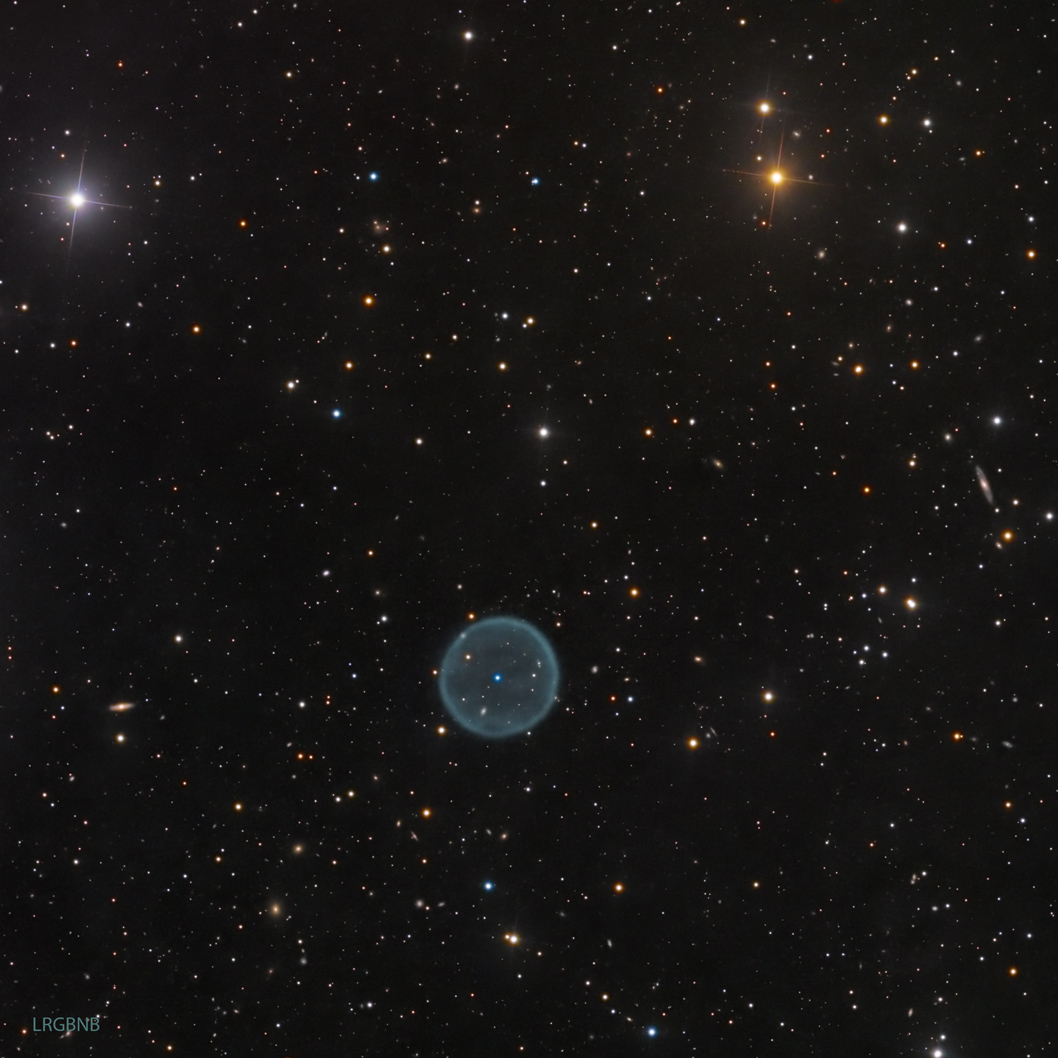
Abell 39 is a very faint planetary nebula, unusual for being quite spherical in shape. A "planetary nebula" (so called because the astronomer who first identified them
as nebulae noted the color was similar to the then recently-discovered Neptune) is a structure of gas resulting from the death throes of a star about the size of our sun, when it runs out of fusable
material; the color is the result of the gas being ionized by the remnant of the star, a white dwarf (ionized oxygen is the dominant emission in this planetary nebulae, giving off the characteristic
blue-green color). The progenitor star is the blueish star at the center of the sphere, bluish because the white dwarf is so hot it emits UV radiation which then ionizes the surrounding oxygen.
Abell 39 is about 7,000 light years from us, and about five light years in diameter. The thickness of the "shell" is about 1/3 of a light year. The shell appears denser at the edges than in the middle as
a result of simple geometry--we are looking through a thicker piece of it when viewed at the edge than at the center. Oddly enough, the progenitor star is not quite at the center of the nebula; it is not
known why.
As with many photos of the night sky, the uncropped version of this shows many, many background galaxies; at least two are visible through the shell of the nebula (the oblong "stars" are galaxies, as are the
round(ish) fuzzy things that don't look like stars). I cropped it for this presentation; I included an uncropped version in case anyone wants to explore the full "canvas."
I have presented this object in two different formats (each image is labeled in the lower left corner); each is interesting in its own way. This is the order in which they appear as you cycle
through (by repeatedly clicking on the photo, waiting for each to download):